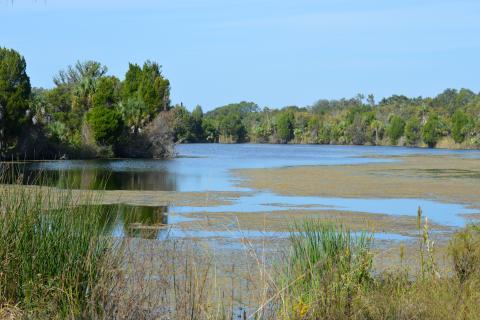Just as building a house takes more than one tool, protecting springs requires many tools. It takes a combination of scientific expertise, studying, planning, personal passion and more among District staff and its community partners.
“In my nearly 20 years here, I’ve worked in various departments and can attest to the multitude of activities in the District all working simultaneously to improve and manage our treasured springs,” said Chris Anastasiou, Chief Environmental Scientist in the Springs and Environmental Flows section. “From water supply to land management to data collection or floodplain mapping, and even regulation, they all come together for the benefit of our springs.”

Some of the tools include:
- Collecting water quality data in the springs and springsheds, which the District has done since the 1970s. This data is used to determine trends, develop priorities and measure the success of projects. Near real-time data for our first-magnitude springs is available at WaterMatters.org/Springs.
- Encouraging increased conservation and the implementation of water reuse projects through proactive regional water supply planning and cooperative funding. Even with a growing population, water use has declined. Reclaimed water projects are helping. For example, a project taking reclaimed water from the City of Crystal River to Duke Energy has reduced the use of 750,000 gallons of groundwater per day.
- Preserving, protecting, and restoring natural systems to support their natural hydrologic and ecological functions. One way this is achieved is through acquiring and managing environmentally sensitive lands for springs protection, which also allows for the restoration of natural habitats. Some examples include Three Sisters Springs in Citrus County and Boat Springs in Hernando County.
- Funding projects to restore and protect springs. The District has funded or co-funded more than 50 springs-related projects, such as wetlands, revegetation, living shorelines, water reuse, conservation programs and more.

- Establishing Minimum Flows and Levels, known as MFLs. They protect from ground and surface water withdrawals that would cause significant harm to a water body or aquifer. District staff have set more than 200 MFLs and spent years collecting data and studying each system before proposing a minimum flow. This is then reviewed by independent scientists and brought before the public for input before being approved by the District’s Governing Board.
- Collaborating with other agencies and community partners. The Springs Coast Steering Committee, formed in 2014, is a prime example of inter-agency and community partnerships. Its mission is to develop comprehensive plans for each of the first-magnitude springs and identifying specific actions and projects that should be implemented to improve each system.
Learn more at WaterMatters.org/Springs.
